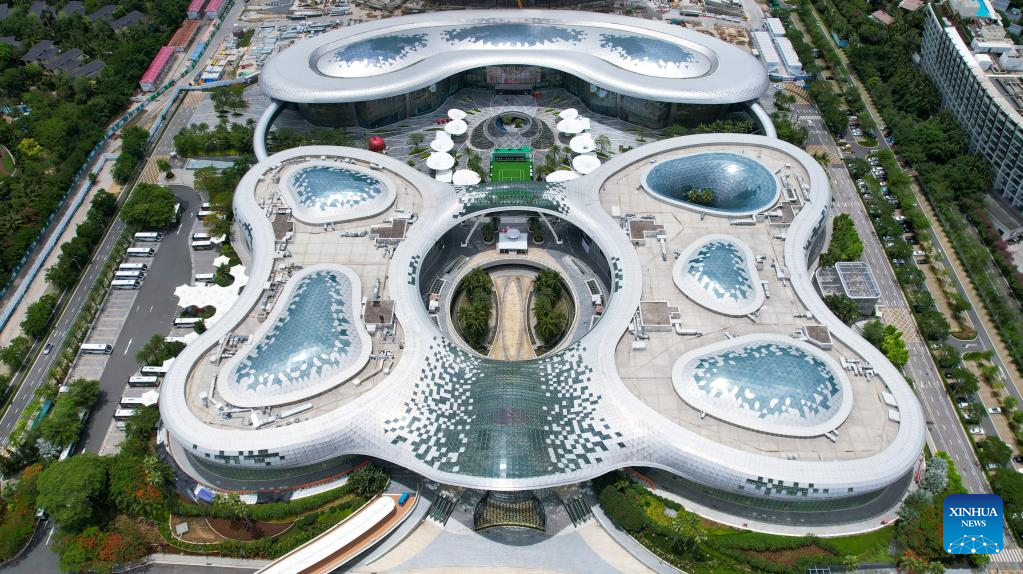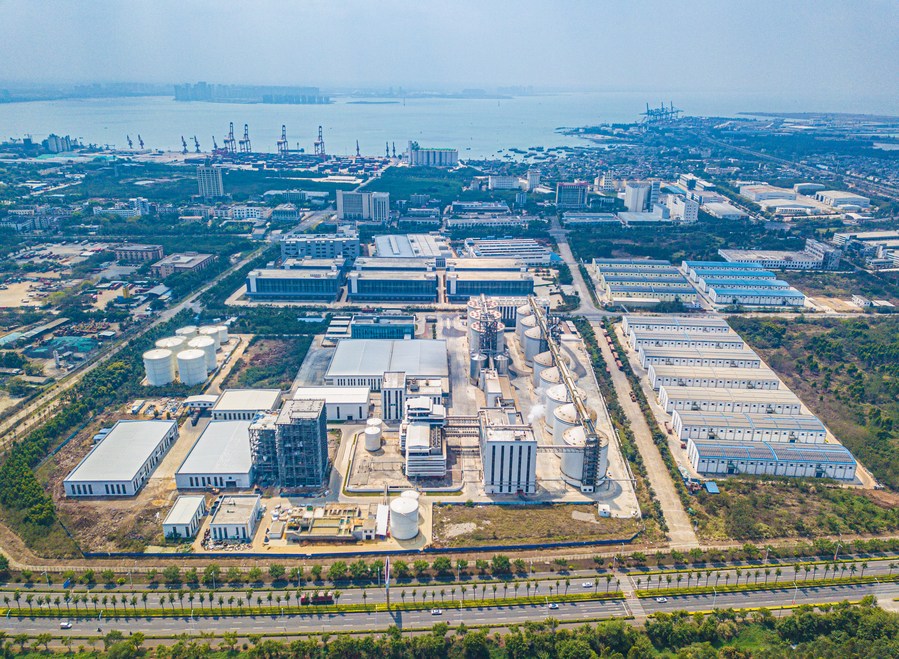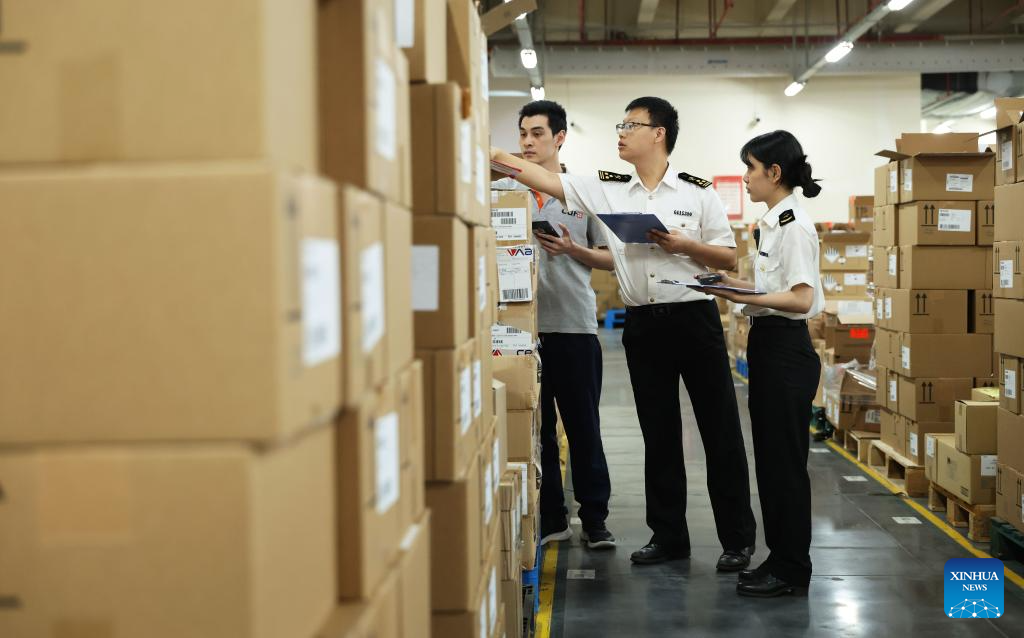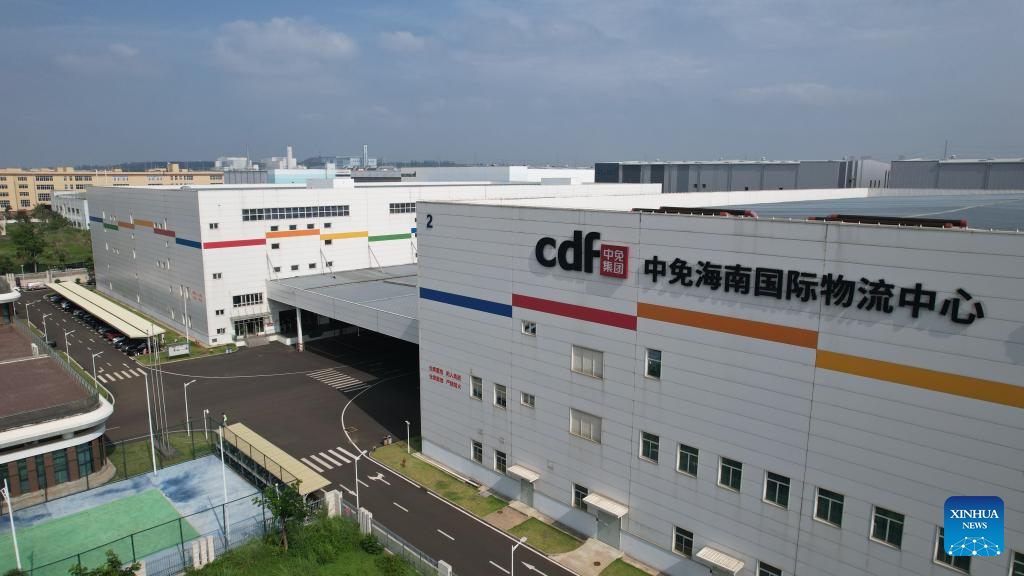
Experts believe the upcoming independent customs operation in Hainan, China's largest special economic zone, will create new opportunities for the Guangdong-Hong Kong-Macao Greater Bay Area to optimize industry chains and deepen trade ties with the ASEAN region.
They called for complementary development and closer transportation links between the two strategic strongholds to jointly fuel China’s high-level opening-up.
The central government announced on Wednesday that Hainan province will launch an island-wide independent customs operation on Dec 18, marking a milestone in the free trade port’s development.
ALSO READ: Hainan FTP's independent customs operation set to boost market vitality
Under the new arrangement, the island will enjoy a broader selection of tariff-free goods, a relatively free flow of these products within the region, and the opportunity to export certain value-added items to other areas of the Chinese mainland without tariffs.
According to the plan unveiled in 2020, the country aims to build Hainan into a high-level free trade port with significant global influence by the middle of this century, characterized by a free trade and investment environment, low taxation, open talent policies and modern industries.

Chi Fulin, president of the China Institute for Reform and Development, a Hainan-based think tank, said the opportunities for mutual development between the Greater Bay Area and Hainan far outweigh the competition between them.
The Greater Bay Area boasts the industrial strengths of nine mainland cities, along with the robust service industries and international networks of the Hong Kong and Macao special administrative regions. In contrast, Hainan benefits from its strategic location at the crossroads of the Pacific and Indian oceans, and the institutional advantages of its high-level opening-up.
READ MORE: Hainan proves open gateway for investment
Chi expects to see the establishment of a corresponding economic cooperation framework and a production division system to promote integrated development.
In particular, he said he expects to see deeper collaboration in the marine industry, digital technology, agro-processing, and the service trade — many of which are Hainan’s pillar industries — and that he encourages Hainan to actively seek support from the Greater Bay Area.

Liang Haiming, chairman of the China Silk Road Valley Research Institute and dean of the Belt and Road Research Institute at Hainan University, said he believes that these new policies will improve Hainan's appeal as a global investment, trade, and logistics hub, adding that he expects it to become a new magnet attracting high-end resources from around the world.
Offering extensive policy support and a platform for industrial integration, Hainan can serve as a new passage for Greater Bay Area enterprises to go global, said Liang. Foreseeing the potential for deeper links in emerging industries like cross-border e-commerce, high-end healthcare, and offshore finance, he urged the two regions to jointly explore innovations in free trade regulations and promote the prosperity of China’s open economy.
READ MORE: Hainan FTP expands opportunities with high-level opening up
Yu Zongliang, director of the Open Economy and Innovation Research of China Development Institute, said he believes that Hainan’s independent customs operations will reshape regional competitiveness, particularly affecting Greater Bay Area enterprises.
Companies that are highly reliant on imports and sensitive to tariffs may shift their operations to Hainan to benefit from the zero-tariff policies, leading to trade and investment diversion effects, said Yu.

Yu said in his view, Greater Bay Area enterprises could leverage Hainan to optimize their business layout. By relocating intermediate production to Hainan for lower costs, while keeping high-end R&D and manufacturing in the Greater Bay Area, companies could build a complementary and efficient cross-regional value chain.
He added that Hainan will contribute to deeper trade integration between China and ASEAN. Its unique role as a cost-buffer platform will supplement traditional bilateral trade routes, helping to build a more flexible and cost-effective trade structure between the two sides.
He also highlighted the importance of strengthening the transport infrastructure between Hainan and Guangdong. Looking forward to transition from the ferry-dependent logistics to high-speed transportation, he called on the authorities to accelerate projects such as a high-speed rail link across the Qiongzhou Strait, adding that this will be key to supporting Hainan’s new development model.
Kennedy Wong Ying-ho, a Hong Kong SAR legislator representing the import and export sector, said that with a broad market and differentiated tourism offerings, Hainan's new tariff policy will not noticeably impact tourism spending in Hong Kong, a premier free port where most goods are tax-free.

Instead, he believes, it is likely to encourage Hong Kong’s high-end brands and talent from within its tourism-related industries to explore opportunities in Hainan. Hong Kong has a wealth of talent in retail, high-end consumption, dining and hotel management, and brand development, which can facilitate the upgrade to Hainan’s consumption services, Wong said.
He predicted that after the new customs arrangement is implemented, the initial phase of synergy between Hainan and the Greater Bay Area will be focused primarily on the tourism-related sectors. Convergence in the manufacturing industries may occur in the medium-term, but cooperation in other areas like finance will require a longer-term perspective.
Since March 1, 2024, the Guangdong-Macao In-depth Cooperation Zone at Hengqin port has also implemented closed customs operation, allowing most goods to enter tax-free from the Macao Special Administrative Region.
While the Hainan free trade port — with an area 330 times the size of Hengqin — aims to further advance China’s reform and opening-up, Hengqin is more focused on facilitating Macao’s economic diversification.
Contact the writer at bingcun@chinadailyhk.com


